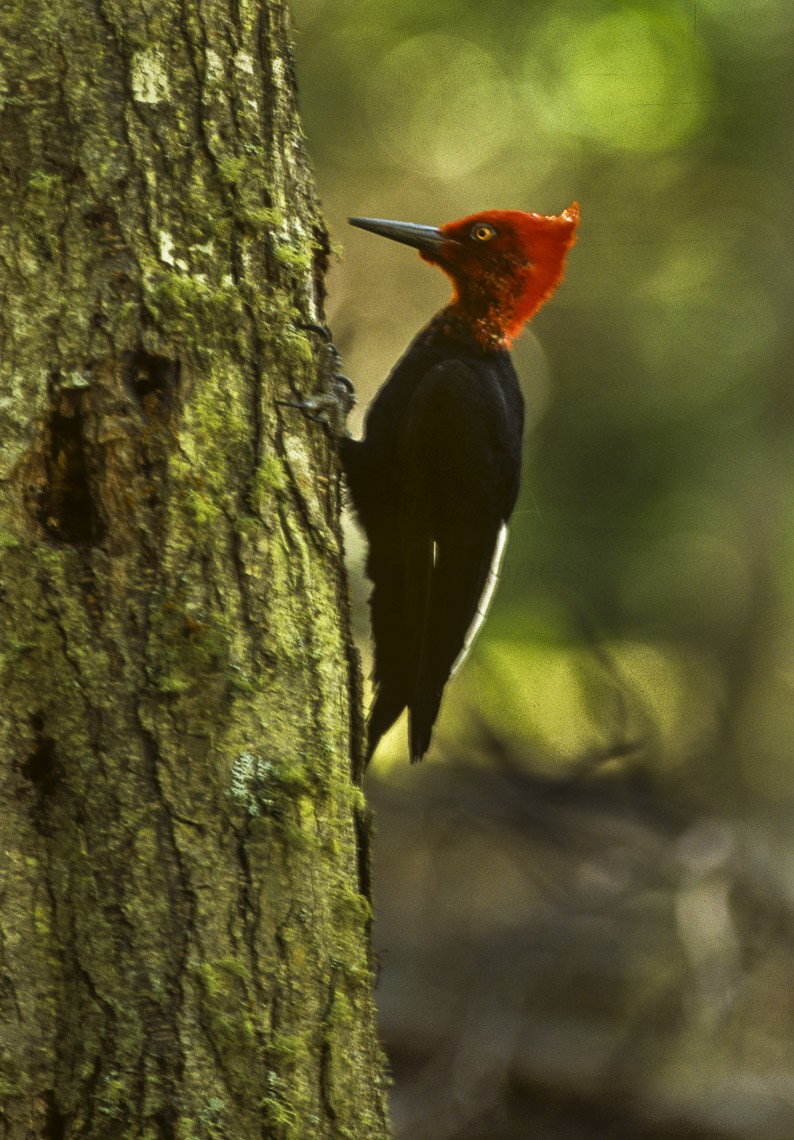Magellanic Woodpecker
A species of Ivory-billed Woodpeckers and Allies Scientific name : Campephilus magellanicus Genus : Ivory-billed Woodpeckers and Allies
Magellanic Woodpecker, A species of Ivory-billed Woodpeckers and Allies
Botanical name: Campephilus magellanicus
Genus: Ivory-billed Woodpeckers and Allies
Content
Description General Info
 Photo By Francesco Veronesi , used under CC-BY-SA-2.0 /Cropped and compressed from original
Photo By Francesco Veronesi , used under CC-BY-SA-2.0 /Cropped and compressed from original Description
The Magellanic woodpecker is 36 to 45 cm (14 to 18 in) in length. Males of this species weigh 312–363 g (11.0–12.8 oz), and females weigh 276–312 g (9.7–11.0 oz). Among standard measurements, the wing chord is 20.5 to 23 cm (8.1 to 9.1 in), the tail is 13.9 to 16.8 cm (5.5 to 6.6 in), the bill is 4.3 to 6 cm (1.7 to 2.4 in), and the tarsus is 3.3 to 3.9 cm (1.3 to 1.5 in). It is the largest South American woodpecker and one of the largest woodpeckers in the world. Among the species known to exist, only the non-neotropical members of the genus Dryocopus and the great slaty woodpecker (Mulleripicus pulverulentus) are larger-bodied. With the likely extinction of the ivory-billed and imperial woodpeckers (Campephilus imperialis), the Magellanic woodpecker is the largest living species of the genus Campephilus. This species is mainly pure black, with a white wing patch and a grey, chisel-like beak. Males have a crimson head and crest. Females have a mainly black head, but an area of red coloration occurs near the base of the bill. Juvenile Magellanic woodpeckers resemble females of the species, but have a smaller crest and have a browner tinge to their plumage. In its range, this bird is unmistakable in appearance. Several vocalizations are emitted by both sexes. Further information is needed to ascertain the function and role of these sounds. One frequent vocalization is an explosive, nasal call (tsie-yaa or pi-caa) given single or in a series (up to seven, sometimes more). Another loud call, usually from pairs, is a gargling call, which normally is emitted in series: prrr-prr-prrr or weeerr-weeeeerr. Like many species in Campephilus, their drum is a loud double knock. 
Size
38 cm
Nest Placement
Cavity
Feeding Habits
Magellanic Woodpecker forage mainly on live trees, seeking prey like insects by actively scouring tree trunks. They sometimes search on dead wood or the ground, especially post-snowmelt. Magellanic Woodpecker exhibit unique foraging behavior around beaver ponds, exploiting habitats altered by beavers.
Habitat
Magellanic woodpeckers inhabit mature Nothofagus and Nothofagus-Austrocedrus forests, where they feed mainly on wood-boring grubs and adult beetles (Coleoptera), as well as spiders. Occasionally, other foods may supplement the diet, including sap and fruits, as well as small reptiles, bats, and the eggs and nestlings of passerines. 
Dite type
Insectivorous
General Info
Feeding Habits
Bird food type
Behavior
Family groups also roost together. In one case, five individuals were observed roosting in a roughly 40 cm (16 in) vertical-depth hole. Breeding pairs are highly territorial and commonly try to aggressively displace and even attack conspecifics, sometimes doing so cooperatively with the juveniles that they had raised in prior years. A lethal attack was recorded in 2014. When they are actively rearing nestlings, the juveniles are aggressively kept at a distance by their parents. 
Species Status
Not globally threatened.